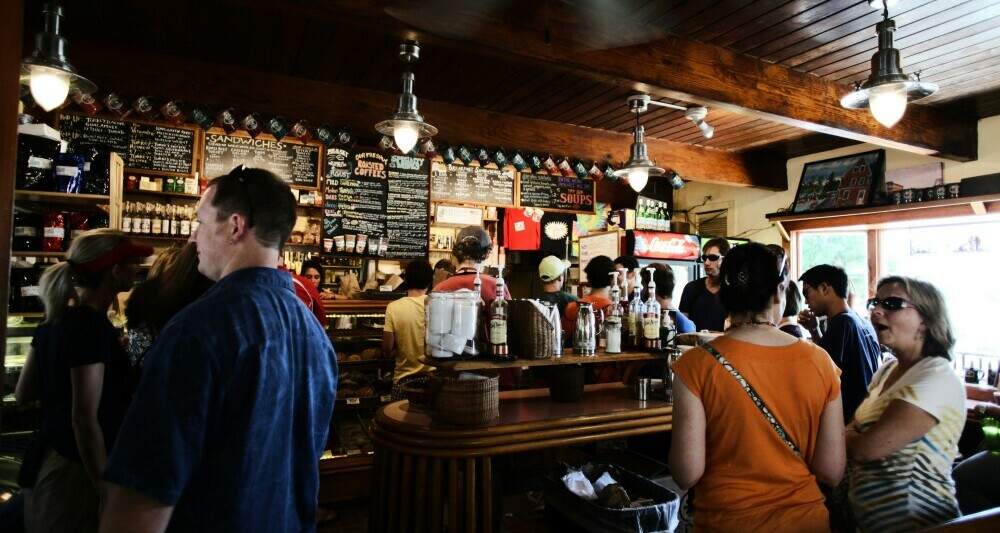How to Close Up a Bar: Tips for a Stylish Finish
How to Close a Bar Like a Pro: Your End-of-Shift Rituals
I’m your host, KAD, and I’ve been slinging drinks and navigating the world of hospitality for over two decades. Over the past 15 years, I’ve perfected my bartending skills, experimented with countless flavor combinations, and learned a thing or two about how to keep the party going and how to shut it down smoothly.
Whether you’re a seasoned bartender looking for a fresh checklist or a beginner eager to learn the ropes, Shake, Sip, Serve is here to guide you. Today, we’re tackling one of the most important (but often overlooked) skills: how to close up a bar like a pro.
Done right, your venue stays spotless, tills are balanced, stock is organized, and your team walks out ready for a smooth start the next day. Let’s dive in.
Disclaimer: This post contains affiliate links. If you purchase through these links, I may earn a small commission at no additional cost to you.

Why Closing Time Matters
Ask any bartender and they’ll tell you: closing a bar isn’t just a chore, it’s a ritual. How you close sets the tone for the next day. A sloppy close leads to stock discrepancies, unhappy managers, and a rushed, stressful open. A smooth close, on the other hand, means less stress, more efficiency, and more trust in the team.
In Australia, this isn’t just about pride—it’s also about compliance. Alcohol service is tightly regulated, with RSA (Responsible Service of Alcohol) certification a legal must-have. Trading hours, intoxication laws, and even how stock is stored at close all fall under compliance responsibilities.
I’ve seen the difference first-hand. I once worked in a pub where closing was rushed—tabs left half-open, garnishes left out, fridges unlogged. Within a month, the venue had thousands of dollars in “disappearing” stock. Compare that with a cocktail bar I later managed, where our close-down routine was non-negotiable. Every item was logged, every fridge checked. Not only did the place sparkle each morning, but stock loss plummeted and the owners trusted the team completely.
That’s the power of a proper close.
Step 1: Closing Tabs and Cashing Out
Before the mop hits the floor, you need to settle the money.
Check Open Tabs
Every bar has that one guest who forgets they’ve left their card behind or started a tab they didn’t close. Before shutting the till, do a final scan of all open tabs in your POS system. This avoids awkward phone calls tomorrow and ensures sales are accurately recorded.
Accept Final Payments
-
Cash: Count change back out loud—“That’s $20, $25, $26.50 back to you.” This builds trust and prevents disputes.
-
Cards/Mobile: Confirm the amount before the tap or swipe. Always offer a receipt—emailed or printed.
Reconcile the Drawer
Match the cash float to your POS report. If you’re over or under, record it. Honesty matters here. Managers would rather see a $10 shortage logged than find $500 unaccounted for.
👉 Pro Tip: If your POS system is old or clunky, consider investing in an updated POS terminal. It’ll save time, reduce errors, and streamline the close-down process. Check out bartender-friendly POS systems here.
Step 2: Stock Check & Inventory
A proper end-of-night inventory is the backbone of bar management.
What to Count
-
Spirits: Full and half bottles.
-
Beer: Kegs and bottles.
-
Wine: Both open and sealed bottles.
-
Mixers & Garnishes: Syrups, citrus, herbs, juices.
Update your stock system so tomorrow’s shift knows exactly what’s on hand.
FIFO – First In, First Out
Oldest stock gets used first. This simple system reduces waste and ensures customers never get served stale mixers or wilted garnishes.
I once worked at a bar where no one followed FIFO. We’d find six-month-old limes rotting at the bottom of the garnish tray—disgusting and costly. Once FIFO was enforced, waste costs dropped dramatically.
👉 Keep your garnishes fresher for longer with airtight bar storage containers.
Step 3: Delegating Closing Duties
Closing isn’t a one-person job. Teamwork is everything.
Here’s a fair split:
-
Cash & Reports → Manager or shift lead.
-
Glassware → Team member with patience (and steady hands).
-
Surfaces & Sanitation → Wipe, disinfect, repeat.
-
Restocking → Ice, garnishes, napkins, bar tools.
-
Floors → Sweep, mop, repeat.
Using a whiteboard checklist ensures tasks don’t get skipped. And rotate roles—it keeps things fair and prevents “I always get stuck with bins” arguments.
Step 4: Deep Cleaning
This is where many rookies cut corners. Don’t.
-
Surfaces – Bar tops, shelves, speed rails, fridges.
-
Glassware & Tools – Washed, dried, stored.
-
Restrooms – Refilled with soap, towels, toilet paper.
-
Floors – Swept and mopped.
A bar that smells clean feels inviting the next day. Customers notice when surfaces are sticky or glasses smell like old beer.
Step 5: Securing Stock & Fridges
The close isn’t done until the alcohol is secured.
-
Liquor Cabinets – Locked, keys logged.
-
Fridges – Checked for correct temperatures (and logged).
-
Perishables – Stored in dated, airtight containers.
-
Health Standards – Many Australian councils require food/drink storage logs for compliance.
👉 Download a fridge temperature log sheet and stick it inside your cooler door—it makes compliance effortless.
Step 6: Power Down
Save power, save money, save equipment life.
-
POS → Off.
-
Lights → Off.
-
Music → Off.
-
Soda guns/taps → Off (as per venue rules).
-
Refrigeration → Adjust only if policy allows.
Step 7: Lock Up & Safety
-
Double-check all doors and windows.
-
Set alarm system.
-
Do a quick walk around the premises.
-
Leave in pairs—never alone.
Many venues enforce a “buddy system” for safety, especially in city areas where staff may be walking to cars or public transport late at night.
Step 8: End-of-Shift Team Wrap
Never underestimate the power of a 3-minute team huddle.
-
Check all tasks are ticked off.
-
Thank the team.
-
Share quick notes for tomorrow.
I always finish with a genuine “cheers for the hard work.” It sounds simple, but it makes people feel seen. Happy staff = better service = better bar culture.
Final Thoughts
Closing a bar is more than just a routine—it’s about professionalism, safety, and respect for your team and venue. When done right, it sets you up for success tomorrow, reduces stress, and builds trust between staff and management.
Thanks for joining us behind the bar! The bartending community is a vibrant and supportive one, and I’m excited to build that community here on Shake, Sip, Serve. I’d love to hear your thoughts, questions, and experiences in the comments below.
-
What are you shaking up these days?
-
What topics would you like to see covered in future posts?
-
Let’s connect and continue the conversation!
👉 For RSA rules and closing regulations in NSW, check Liquor & Gaming NSW.
Check out more:
A Bartender’s Guide To Inventory Management
Bartender’s duties and responsibilities: The Life Behind the Bar.
Managing Inventory and Cost in the bar
What It Takes To Become A Rockstar Bartender
The Ultimate Bartender’s Guide To Opening The Bar Checklist
Wrapping Up The Night: Guide To Closing The Bar
Sparkling Service: Bartenders Keeping The Bar Area Clean
Balancing Speed And Quality In Bartending
Check out more :
What It Takes To Become A Rockstar Bartender
Bartenders duties responsibilities : The Life Behind the Bar.
Sparkling Service: Bartenders Keeping The Bar Area Clean
A Bartenders Guide To Inventory Management
Balancing Speed And Quality In Bartending
The Ultimate Bartender’s Guide To Opening The Bar Checklist
Wrapping Up The Night: Guide To Closing The Bar
Disclaimer: This post contains affiliate links. If you purchase through these links, I may earn a small commission at no additional cost to you.
